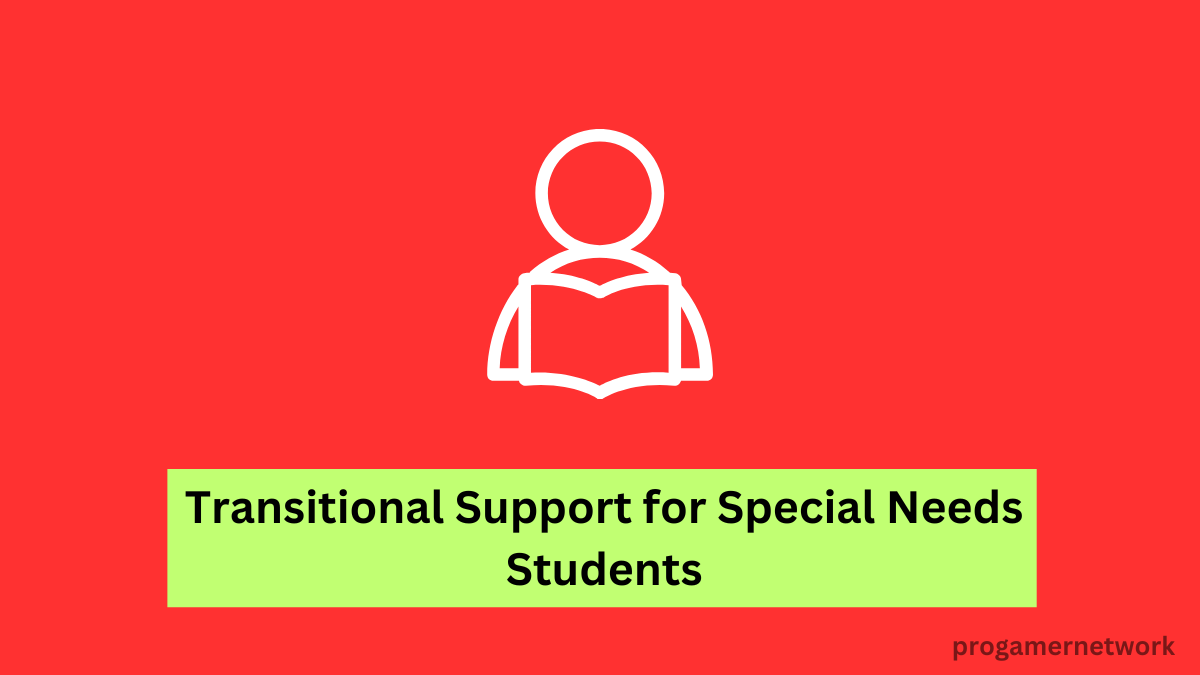Transitional support for special needs students isn’t just a fancy term thrown around in education circles; it’s a lifeline that can significantly impact a student’s journey. Imagine trying to navigate a maze without a map. For many students with special needs, transitions like moving from one school level to another can feel just as daunting. In this article, we’ll explore why transitional support is crucial and how it can make a world of difference for students and their families.
Understanding Transitional Support
What is Transitional Support?
So, what exactly is transitional support? At its core, it refers to the services and assistance provided to help special needs students move smoothly between different educational settings or phases in their lives. This support is about more than just academics; it includes social skills, emotional resilience, and practical life skills.
Why is Transitional Support Essential?
Why should we care about transitional support? Well, studies have shown that effective transitions lead to better academic performance and improved social interactions. Think of it like preparing for a marathon. Without proper training and support, the chances of successfully crossing that finish line diminish significantly.
Key Transition Periods for Special Needs Students
Transition from Early Childhood to Elementary School
The leap from early childhood to elementary school can be overwhelming. Kids face new environments, expectations, and social dynamics. Support during this transition can ease anxieties and set a positive tone for future learning experiences.
Transition from Elementary to Middle School
Moving up to middle school introduces a whole new level of challenges, including locker combinations and navigating multiple classes. This phase is critical for developing independence and social skills, making adequate preparation essential.
Transition from Middle to High School
The transition to high school can be particularly challenging. With new academic demands and social pressures, students may struggle. Effective support can help them adapt and thrive, ensuring they’re not just surviving but truly engaged in their education.
Transition to Post-Secondary Education or Employment
Finally, let’s talk about life after high school. Transitioning to post-secondary education or the workforce presents unique challenges. Support here can mean the difference between a student floundering in the real world and soaring toward success.
Components of Effective Transitional Support
Individualized Education Plans (IEPs)
IEPs are like personalized roadmaps for special needs students. These plans outline specific educational goals and the support necessary to achieve them, making them crucial during transitions.
Collaboration with Parents and Caregivers
Parents and caregivers are the frontline advocates for their children. Their involvement in the transition process is invaluable, providing insights that can shape effective support strategies.
Support from Educators and Specialists
Teachers and specialists play a pivotal role in facilitating smooth transitions. They can offer resources, insights, and hands-on support to help students navigate their new environments.
Strategies for Implementing Transitional Support
Developing a Transition Plan
Creating a solid transition plan is essential. This plan should outline the steps necessary for a successful transition, including goals, timelines, and responsible parties.
Skills Development
Focus on developing critical life skills such as self-advocacy, communication, and time management. These skills will empower students and prepare them for the challenges ahead.
Community Resources and Support
Don’t overlook local community resources! Organizations, programs, and workshops can offer additional support and opportunities for skill development outside of school.
Challenges in Providing Transitional Support
Funding and Resource Limitations
One of the biggest hurdles in providing effective transitional support is funding. Many schools struggle to allocate the necessary resources, leading to gaps in support.
Awareness and Training
Not all educators are equipped with the knowledge or training to support students with special needs during transitions. Ongoing professional development is crucial.
Individual Differences Among Students
Every student is unique, which means that one-size-fits-all solutions often fall short. Tailoring support to meet individual needs is essential for success.
Success Stories and Case Studies
Highlighting Successful Transition Programs
Across the country, schools are implementing innovative transition programs that yield positive results. By showcasing these success stories, we can learn what works and inspire other educators to adopt similar approaches.
Personal Testimonials
Hearing from students and families who have navigated these transitions can be incredibly powerful. Their stories highlight the real-world impact of effective transitional support.
Conclusion
Transitional support for special needs students is not just a nice-to-have; it’s a necessity. By understanding the key components, strategies, and challenges, we can work together to create a supportive environment that fosters success for all students. Whether you’re an educator, parent, or community member, your role in this process is vital. Let’s make sure that no student is left behind as they navigate the complex maze of educational transitions.

